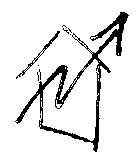Revisiting Knuth and McIlroy's word count programs
Here’s the problem:
Read a file of text,
determine the n most frequently used words,
and print out a sorted list of those words along with their frequencies.
I thought I’d do this problem in the Go programming language to see how hard it is.
I found the problem statement on this blog
PDF of original magazine exchange here
I don’t know when I first saw this problem, and the solution. I think it was in the 1989-1990 time frame, right after I bought an AT&T Unix PC that ran System Vr3 Unix, and had that fancy new “korn shell”.
The sort | uniq -c | sort -k1.1nr idiom is outstandingly useful.
I probably used it the day I wrote this article.
Results
- McIlroy’s shell script version
- My Go version, 68 lines, some blank, some boilerplate
Test inputs:
- Small count word frequency
- Upper/lower case word frequency
Even a few simple test cases revealed bugs in my program. My Go program is probably not as good as Knuth’s literate, almost guaranteed-correct version.
Analysis
The Go program imports 7 packages from the standard library,
and defines 2 new types.
It makes heavy use of standard library for line-oriented input,
and to break a line into words.
One of the new types arises because of the way the “top N” requirement
interacts with the sort package’s use of Go interfaces.
The actual unique-word counting gets done using a Go map type.
It took far less than 3 hours to do this task.
The git logs show almost exactly 3 hours between first and last
check in of wc.go.
I did eat a meal in there,
and have a longish discussion with a family member.
Three hours compares very favorably with the 9.5 hours spent implementing a C language version published contemporaneously with Knuth’s solution.
The real problem is deciding what’s the correct output
for something like my Github repo’s README.md file.
1499 % ./mcilroy 5 < README.md
13 the
10 a
9 and
9 go
9 of
1500 % ./wc 5 < README.md
./wc 5 < README.md
13 the
10 a
9 of
8 and
6 go
McIlroy’s shell script turns all punctuation marks into newlines, exposing “-and-”, which appears in a URL, as the word “and”. My program does not truck with punctuation, so it misses that “and”. Should the string “revisiting-knuth-and-mcilroys-word-count-programs” count as 7 “words”, or just one?
This small difference illustrates a major problem in software engineering. What’s obvious to the requirements writer may not be obvious to the programmer. Programming entails attention to “minor” details like that, and “correct” versus “incorrect” programs hinge on those minor details.
I’m going to both agree and disagree with the blogger, Franklin Chen. I’m skeptical of literate programming for the same reasons he is. But I don’t think that “general purpose” programming languages are a universal replacement for shell scripts. It’s far harder to get a C, Go or Haskell program correct for some weird variant on word frequency, than it is to get a shell script correct. Simple, one-off text processing shell scripts have a lot of value in exploratory contexts. Knowing how to do the kind of text processing that McIlroy’s script illustrates is a valuable skill when dealing with more than a page or two of information.
